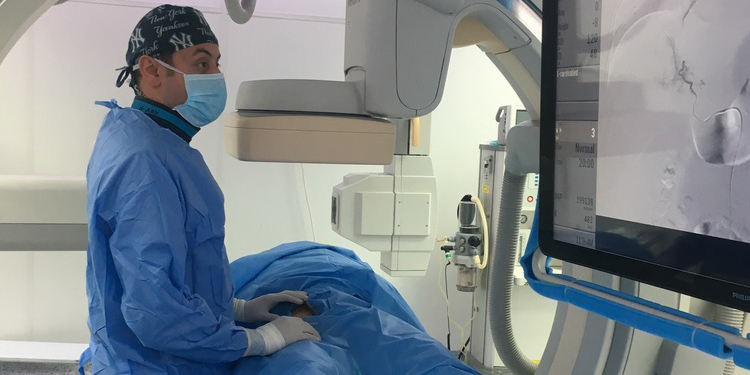
Overview
What is IVC Filter Placement and Removal?
IVC Filter Placement and Removal refer to medical procedures involving the insertion and retrieval of a specialized device into the Inferior Vena Cava (IVC), a major vein responsible for carrying deoxygenated blood from the lower body to the heart. This device, resembling a small cage, serves specific purposes related to blood clot management.
Common Uses of the Procedure:
- Diagnosed with Deep Vein Thrombosis (DVT): IVC filters may be utilized when individuals are diagnosed with DVT to prevent blood clots from traveling to the lungs.
- Trauma Victims: This procedure is commonly employed in trauma victims at risk of blood clots due to injuries.
Treatments for IVC Filter Placement and Removal:
The treatments associated with IVC filter placement and removal are designed to address specific medical conditions, particularly those related to blood clot management and prevention. These procedures include:
- IVC Filter Placement: Commonly used for individuals diagnosed with deep vein thrombosis (DVT). Applied for trauma victims who are at risk of blood clots.
- IVC Filter Removal: A procedure to retrieve or replace the IVC filter once its purpose is served. Considered when the risk of blood clots has diminished.
How does the Procedure Work?
The IVC filter placement involves using a specialized catheter to position the filter within the inferior vena cava. This creates a protective barrier, intercepting blood clots and preventing them from reaching vital organs.
What Will I Experience During and After the Procedure
During the procedure, you may encounter slight pressure or discomfort, which is generally well-tolerated. After completion, patients often resume normal activities with minimal downtime. For personalized details and guidance, consult with your healthcare provider.
Benefits vs. Risks:
Benefits:
- Blood Clot Prevention: IVC filter placement helps prevent blood clots from reaching vital organs.
- Minimized Organ Damage: By intercepting clots, potential damage to organs is reduced.
- Quick Recovery: The procedure is generally well-tolerated, allowing for a swift return to normal activities.
Risks:
- Discomfort: Some patients may experience mild pressure or discomfort during the procedure.
- Possible Complications: While rare, complications such as bleeding or infection may occur.
- Long-Term Implications: Long-term risks and benefits should be discussed with your healthcare provider for personalized insights.
Consider scheduling a consultation with Dr. Mohamed Hosni, a distinguished interventional radiologist. Dr. Hosni's expertise ensures personalized care, addressing your concerns about IVC filter placement or removal. Take the first step towards understanding your options and maintaining vascular health.
Book Your Appointment Now
